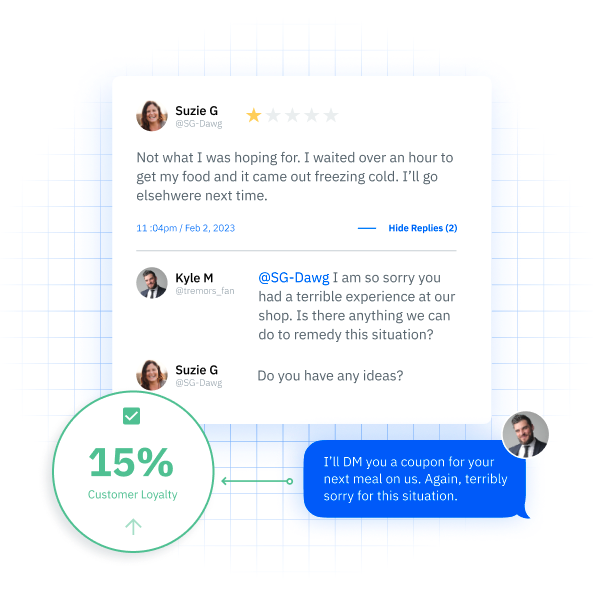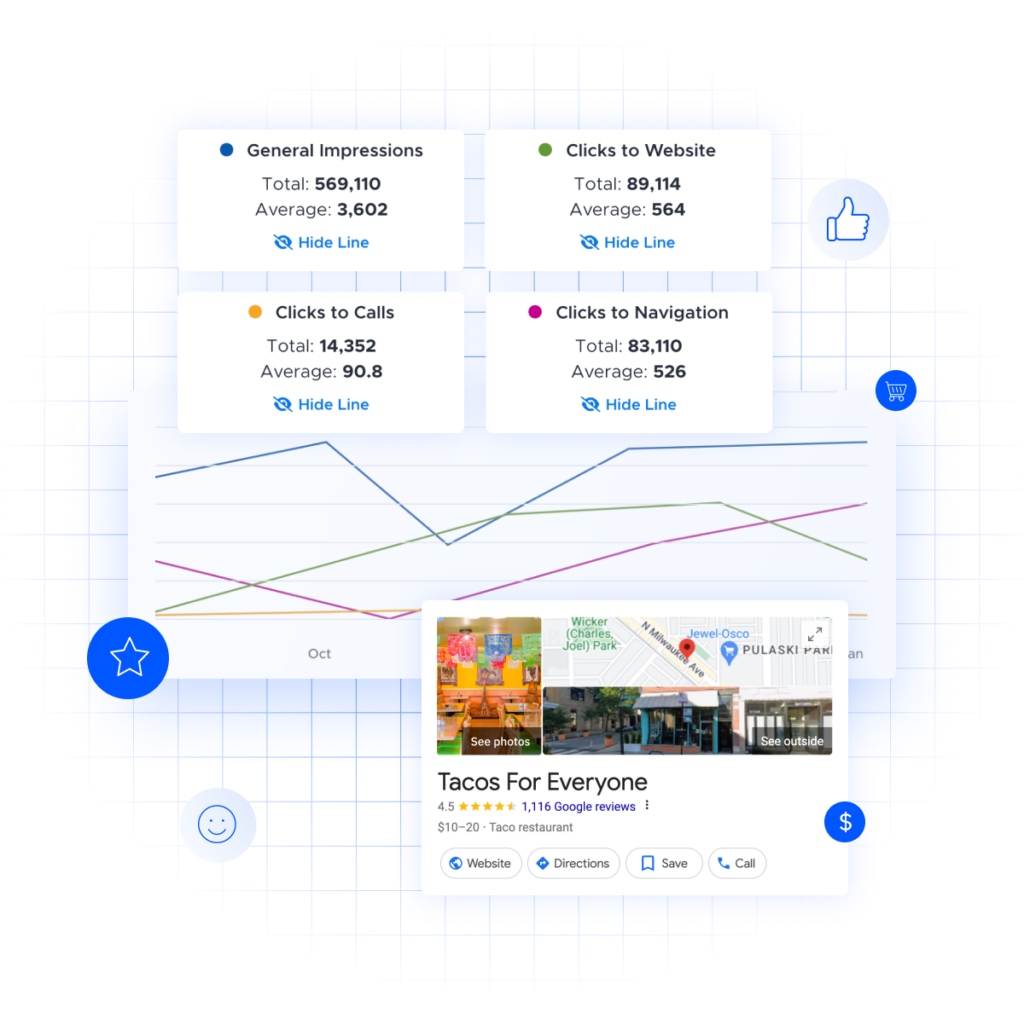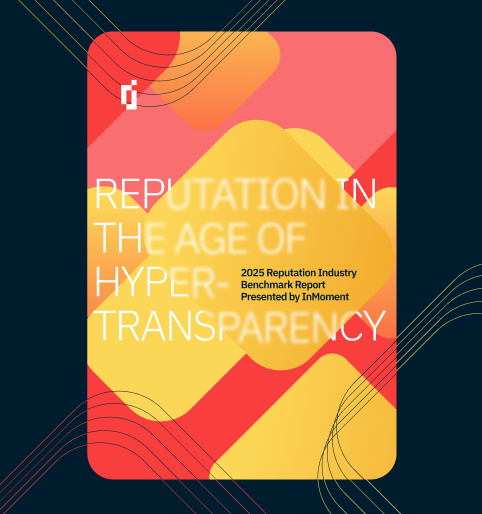5 Tips to Expertly Manage & Boost Your Online Reputation
Managing an online reputation has become a cornerstone for businesses striving to enhance customer acquisition, retention, and growth. In today's digital age, consumers are highly informed and interconnected, amplifying their voices and influence.
A staggering 94% of consumers avoid a business due to negative reviews. Platforms like X, Meta/Insta, YouTube, and Google shape brand perceptions and impact purchasing decisions, directly affecting your ROI. Understanding and responding to social data and reviews to drive actionable business outcomes is crucial. Customers expect not only to be heard but also understood and swiftly responded to.
With this in mind, we want to make it clear that it isn’t just about monitoring and management of these feedback channels, but actively engaging with and learning from your customers. By doing so, you meet their expectations and stay ahead of the curve by anticipating needs and adapting experiences in real-time. The result is a robust brand reputation, increased customer loyalty, and ultimately, improved business results. Overlooking it might spell your downfall.
The Role of Social Media and Reviews in Online Reputation Management
For years now, social media and online reviews have emerged as pivotal elements in shaping consumer behavior and business outcomes. Their role in managing an online reputation cannot be overstated, as they directly influence brand perception, customer trust, and purchasing decisions. This high level of reliance on social media for product information means that businesses must maintain an active and positive presence.
Positive feedback and high ratings can significantly bolster a brand’s reputation, making it more attractive to potential customers. For instance, glowing reviews and endorsements can act as powerful testimonials that sway undecided consumers. They provide social proof, reassuring potential customers about the quality and reliability of a product or service. Conversely, negative comments and low ratings can highlight areas needing improvement, presenting businesses with opportunities to refine their products and services. If managed well, even negative feedback can be valuable, offering insights into customer pain points and areas where the business can improve.
Moreover, the unstructured data generated from social media and reviews can be a goldmine for businesses. Analyzing this data provides deep insights into customer preferences, emerging trends, and common pain points. This information is invaluable for making informed decisions and tailoring marketing strategies to better meet customer needs. Advanced analytics tools, such as sentiment analysis and natural language processing, can further enhance the understanding of customer feedback, enabling businesses to respond proactively and strategically.
Tips for Managing Your Online Reputation
1. Implement Robust Data Collection Mechanisms
A comprehensive approach to managing online reputation begins with robust data collection. Utilizing an Integrated CX (Customer Experience) platform allows businesses to unify all types of customer data—structured, unstructured, and semi-structured—into a single dashboard. This consolidated view is crucial for monitoring social data, star ratings, customer sentiment, and reviews efficiently.
For example, a business looking to improve its retail customer experience can use a CX platform to track customer feedback from various sources such as Facebook, Google Reviews, Twitter, and email surveys. By aggregating this data into one dashboard, the business gains a holistic view of customer sentiment and can identify patterns or recurring issues. This comprehensive insight enables the company to make informed decisions and address potential problems before they escalate. Tools like Pearl-Plaza or Medallia offer such platforms, providing businesses with real-time analytics and visualizations to streamline data management.
2. Respond Swiftly to Feedback

Timely responses to customer feedback are essential for maintaining a positive online reputation. Ensuring your team promptly addresses inquiries, complaints, and feedback can significantly enhance customer satisfaction and boost your brand’s reputation for attentiveness and service excellence.
Consider a scenario where a customer posts a complaint about delayed shipping on Twitter. If the company responds within minutes, offering an apology and a solution, it demonstrates a high level of customer care and responsiveness. This immediate engagement not only resolves the issue but also showcases the brand’s commitment to customer service. Companies like Zappos are well-known for their rapid and effective customer service responses on social media, which have helped build a loyal customer base.
3. Leverage Predictive Analytics
AI-driven predictive analytics can transform how businesses manage their online reputation by identifying actionable insights and optimizing customer experiences. Predictive analytics helps in anticipating customer needs and adapting strategies in real-time.
For instance, a hotel chain could use predictive analytics to analyze past guest reviews and predict future trends in customer satisfaction. By identifying patterns—such as frequent complaints about room cleanliness during peak seasons—the hotel can proactively address these issues before they arise, ensuring a better guest experience. Predictive analytics tools like IBM Watson and Google Analytics can provide these capabilities, allowing businesses to stay ahead of customer expectations and maintain a positive reputation.
4. Personalized Customer Interactions
Deepening the understanding of individual customer preferences and behaviors is key to personalizing communications and offers. Tailoring experiences based on current trends and insights enhances customer engagement and loyalty.
A personalized approach can be as simple as addressing customers by their names in emails or as sophisticated as recommending products based on previous purchases and browsing behavior. For example, Netflix excels at personalizing user experiences by offering content recommendations based on viewing history. This level of personalization makes customers feel valued and understood, fostering a stronger connection to the brand. Utilizing CRM tools like Salesforce or HubSpot can help businesses gather and analyze customer data to create tailored marketing strategies.
5. Establish Training and Policies
Equipping your team with the necessary training and policies is crucial for handling social interactions effectively. Training should focus on best practices for engaging with customers online, managing crises, and maintaining a consistent brand voice. Clear guidelines ensure all team members know how to handle sensitive situations appropriately.
For instance, a social media team should be trained on how to respond to reviews, both positive and negative feedback professionally and empathetically. During a crisis, such as a product recall, having predefined response protocols can help manage the situation more efficiently and reduce potential damage to the brand’s reputation. Establishing a social media policy that outlines acceptable responses, tone of voice, and escalation procedures ensures that all interactions align with the company’s values and objectives.

The Stakes of Ignoring Social Media and Reviews
Missed Engagement Opportunities
Ignoring social media and reviews means missing direct conversations with customers, which can significantly impact a business’s reputation and customer satisfaction. Social media platforms and review sites provide unparalleled opportunities for engagement, from addressing complaints to highlighting positive experiences. Engaging with customers on these platforms allows businesses to manage their brand narrative, build relationships, and foster loyalty.
For example, a restaurant that actively responds to Yelp reviews—both positive and negative—demonstrates to customers that it values their feedback. By thanking customers for positive reviews and addressing concerns raised in negative reviews, the restaurant can show its commitment to continuous improvement and customer satisfaction. Conversely, ignoring these reviews diminishes the brand’s voice, leading to a lack of control over the narrative. This passive approach can result in missed opportunities to turn negative experiences into positive ones, leaving customers feeling unheard and undervalued.
Similarly, social media platforms like Twitter and Instagram offer businesses the chance to engage in real-time conversations with their customers. When a customer tweets a complaint about a delayed product delivery, a quick response from the business acknowledging the issue and providing a solution can turn a negative experience into a positive one. This type of engagement not only resolves the immediate issue but also shows other potential customers that the business is attentive and responsive.
Reputation Damage
A brand is often judged by its worst review, especially if it goes unaddressed. Negative reviews can spread quickly across social media and review platforms, significantly damaging a brand’s reputation if not managed promptly and effectively. For instance, a single unresolved complaint about poor service can be shared widely, creating a negative perception of the brand that can deter potential customers.
Active management of social media and reviews can turn potential crises into stories of excellent customer service. For example, a hotel that receives a complaint about cleanliness can respond publicly, apologize, and offer a resolution, such as a discount on a future stay or immediate housekeeping service. This proactive approach not only resolves the issue for the affected customer but also demonstrates to other potential customers that the hotel takes feedback seriously and is committed to maintaining high standards. By addressing negative reviews head-on, businesses can mitigate the damage to their reputation and even improve their standing with customers.
Consider the example of United Airlines, which faced a major backlash after a video of a passenger being forcibly removed from an overbooked flight went viral. The initial response from the airline was widely criticized as inadequate and insincere, leading to significant reputational damage and a loss of customer trust. In contrast, when Southwest Airlines faced a crisis due to flight cancellations, their swift and transparent communication with customers, including frequent updates and compensation offers, helped mitigate the negative impact and preserved customer loyalty.
Competitive Disadvantage
Competitors who effectively leverage social media and reviews often enjoy enhanced customer loyalty and trust. They can engage with their audience, respond to feedback, and make informed improvements based on customer insights. By neglecting these platforms, a business risks falling behind, missing out on valuable insights that could drive innovation, and failing to connect with a tech-savvy customer base that values transparency and responsiveness.
For instance, consider two competing retail brands: one actively engages with customers on social media, responding to queries, resolving complaints, and thanking customers for positive feedback; the other remains silent. The brand that engages builds a community of loyal customers who appreciate the interaction and responsiveness. This brand is also more likely to attract new customers who see positive interactions and feel confident in the brand’s commitment to customer service.
Let Inmoment Help You Manage Your Online Reputation
Managing an online reputation requires a multifaceted approach that includes robust data collection, swift responses to feedback, predictive analytics, personalized customer interactions, and thorough training and policies. By implementing these strategies, businesses can maintain a positive online presence, enhance customer satisfaction, and drive long-term success.
By actively engaging with customer feedback across various platforms, you can significantly improve your brand reputation, increase customer loyalty, and drive business growth.
Schedule a demo with us today to advance your online reputation management strategy!
References
“Social Commerce Statistics.” Porch Group Media, (https://porchgroupmedia.com/blog/social-commerce-statistics/) Accessed 7 May 2024.






